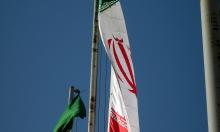The power shift to the East: The 'American Century' is ending
(Continued. read Part III of the article here)

The world economic landscape is rapidly changing and a very different world is emerging. It is perhaps too early to tell whether the US and the EU will head down toward geopolitical rivalry, but the warning signs are certainly present. The rise of euro and the resulting competition with the American dollar will have geopolitical consequences. In the near future, the US and Europe are likely to engage in more intense competition over global trade and finance. A more assertive and dynamic Europe and a less competitive American economy do make it likely that trade disputes will become more politicised.
None of these political-economic trends could plausibly lead to armed conflict between the US and Europe, of course. But any one of them could result in a dramatically different world than the one we live in today.
In 20 years time, however, by 2025, America and Europe may both be spending much more time worrying about the rise of Asia than about each other. Even without a collapse of the dollar hegemony, there seems to be satisfactory evidence for a great and rapid shift of wealth and power to China and India. Currently, the economic power of China and India is growing at three to five times the GDP rate of Western states. The transfer of power from the West to the East is gathering pace since the late 1990s, and Washington think-tanks have been publishing thick white papers charting Asia's, and China's in particular, rapid progress in microelectronics, nanotech, and aerospace, and printing gloomy scenarios about what it means for America's global leadership. The American administration considers China as a potential 'strategic competitor' and has exerted enormous pressure on it since the early 1990s. One flash point with the US is China's fast growing demands for oil. China was the world's second largest consumer of petroleum products in 2004, having surpassed Japan for the first time in 2003, with total demand of 6.5 million barrels per day (bbl/d). China's oil demand is projected by EIA to reach 14.2 million bbl/d by 2025, with net imports of 10.9 million bbl/d.
The opening up of China's economy to global forces was part of US Cold War policy, with the intention of reaching a rapprochement with Mao Zedong in the 1970s against the Soviet bloc. How ironic that now, three decades later, the US increasingly regards a fast expanding market economy in China as a serious threat to US global hegemony. The uncertainty of the US economy and the decline of US technological leadership indicate that the time has come for the US to rethink its strategic economic options. All this may soon dramatically change the context for dealing with global economic challenges.
Today, China is growing with bewildering speed and is the most obvious power on the rise to the economic superpower status. But it is not alone. India and other Asian states now boast growth rates that could outstrip those of major Western countries for decades to come. China is currently the world's sixth largest economy with an annual economic growth of more than nine percent. India's annual growth rate is eight percent. China's economy is expected to overtake France and Britain this year, be double the size of Germany's by 2010, and to overtake Japan's, currently the world's second largest, by 2020. Due to its one-child policy, China's working-age population will peak at 1 billion in 2015 and then shrink steadily. India has nearly 500 million people under age 19 and higher fertility rates. By mid-century, India is expected to have 1.6 billion people - and 220 million more workers than China. Of course, this could be a source for instability. But a great advantage for growth if the government can provide education and opportunity for India's masses. The experience of the last 10 years provides more optimism than problems for India in near future.
China has become the engine driving the recovery of other Asian economies from the setbacks of the 1990s. Japan, for example, has become the largest beneficiary of China's economic growth, andits leadingeconomicindicators haveimproved as a result. Thanks to increased exports to China, Japan is finally emerging from a decade of economic crisis.
By the year 2020, the U.S. National Intelligence Council (NIC) predicts, China will be an economic powerhouse, vying with the United States for global supremacy. Mapping the Global Future: Report of the National Intelligence Council's 2020 Project, one of the council's recent key reports in 2004 on the status of the world, says China's economic growth, expanding military capabilities, and large population will guarantee its success. 'In the same way that commentators refer to the 1900s as the "American Century", the 21st century may be seen as the time when ... China ... comes into its own', the council wrote. The report comments as 'the world of 2020 will differ markedly from the world of 2004, and in the intervening years the United States will face major international challenges that differ significantly from those we face today.'
After China , India is emerging as an economic superpower. From outside and with just a touristic observation it is hard to tell that India is emerging as an economic giant. Jolting signs of extreme poverty abound even in the business capitals. A lack of subways, and badly designed road system, and terrible traffic. But visit the office towers and research and development centres emerging everywhere in India, and you'll see the miracle. Indians are today playing invaluable roles in the global innovation chain. Motorola, Hewlett-Packard, Cisco Systems, and many other high-tech giants now rely on their teams in India to devise software platforms and dazzling multimedia features for next-generation devices. Intel has 2000 electrical engineers with PhDs in Bangalore designing absolutely the latest ships. Indian engineering houses use 3-D computer simulations to produce sophisticated designs of everything from car engines and forklifts to aircraft wings for clients like General Motors and Boeing Corp. In March 2006, in a strategic move to meet the growing global demands for online security solutions, McAfee, Inc, the global leader in Intrusion Prevention and Security Risk Management, announced the opening of its McAfee India Centre in Bangalore, the largest development centre for McAfee around the world.
The post-war era witnessed economic miracles in Japan and South Korea. But neither was populous enough to power worldwide growth, or change the global game in a complete spectrum of industries. China and India, by contrast, possess the weight and dynamism to transform the 21st century global economy. The closest parallel to their emergence is the saga of the late 19th and early 20th century America: a rising, robust, energetic continental economy with an innovative young driven force that grabbed the lead in agriculture, apparel, and the high technologies of the era, such as steam engines, the telegraph, and electric lights. The last century witnessed the predominance of Europe dwindle before the extraordinary might of the United States. But in a way, even America's rise falls short in comparison to what's happening today. Never has the world seen the simultaneous, sustained takeoffs of two countries that together account for one-third of the world's population. 'India and China have become not only the world's fastest growing economies, but are also destined to become the world's largest - surpassing both Japan and the United States.'
What makes the two Asian giants especially powerful is that they complement each other's strengths. China will stay dominant in mass manufacturing, and is one of the few countries building multibillion-dollar electronics and heavy industrial plants. The Chinese not only make textiles and cheap toys. They also make semiconductors and very advanced technology. India is a rising power in software, design, services, and precision industry. If Chinese and Indian industries truly collaborate, they would easily take over the world high-tech industry. These immense workforces are already converging. Thanks to the Internet and the collapse in the telecommunication costs, multinationals are having their goods built in Chinawith software and circuitry designed inIndia.
One obvious reason to this shift in the balance of power in many technologies is that China and India graduate a combined more than half a million engineers and scientists a year. The United States' educational system is beginning to lag behind in this area. The total number of graduates in America is only 60.000. Together, the labour pool of very skilled professionals, in those two countries, is growing three times faster than the United States. In three years' time, the total number of young researchers will rise to 1.6 million in India and China together. Because these two countries can throw more brains at technical problems, their contribution to innovation is increasing fast.
Western business is not just shifting research/ design/ and production work to Asia , because Indian and Chinese brains are young, cheap and plentiful. In many cases, the Asian engineers are better educated and they combine complex skills: mastery of latest software tools, a knack for complex mathematical algorithms, and fluency in new multimedia technologies. That's true that many Western companies came to India and China for the low cost. But they are staying for the quality, and they are investing for the innovation.
What is driving Asia's export-driven economy, however, is not the Western demand, but its own people, fast rising homegrown consumer class. With unemployment low and wages rising, Asian consumers are turning out to buy. Gregory Fager, a director of the Institute of International Finance in Washington , said demographics and economic development are helping drive Asian consumer demand. Younger consumers are more inclined to spend than their elders, and Asian markets are getting younger and younger. China and India are the world's largest and second largest consumer markets. More than half of India's 1.1 billion people are younger than 25.
China is currently the world's third largest travel market, with 120 million air passengers in 2004. China 's passenger car market also is already third largest in the world. For instance, Volkswagen is producing more cars in China than in Germany. China has the world's biggest base of mobile-phone subscribers - 350 million -- and that is expected to rise 600 million by 2009. With over 100 million Internet users this year, China is a dominant presence in the Internet world. In two years, China should overtake the US in homes connected to broadband. The rapid growth of Chinese Internet market has turned the country into a promised land for many Internet giants, like Yahoo, Google, MSN and eBay. The rise of the Asian consumer helped prompt the International Monetary Fund to increase forecasts for economic growth for the region this year. Asian stock markets are booming, led by India's, as investors bet that stronger domestic demand will help the region reduce its dependence on consumer spending in the U.S. and Europe. Recent studies show that the attitudes and aspirations of today's Chinese and Indians resemble those of Americans a few decades ago. Surveys of thousands of young adults in both countries found that they are overwhelmingly confident about the future and believe success is in their hands.
The last 10 to 12 years have witnessed 3 billion people entering into what we call the global economy. From the past examples, we're accustomed to thinking of newcomers as countries that concentrate on doing unskilled, labour-intensive tasks. What is interesting about these 3 billion people is that, while, on average, they are poor and while most of them are unskilled, there are such a large number of them, and a small percentage of 3 billion is still a lot of people. A small percentage of these 3 billion, 300 million of them are highly skilled and very well educated and ready to produce everything with the latest hi-tech methods. These 300 million, still a large number, as large as the US, larger than Japan, and any European country, makes a big and long-lasting impact on the global economy. All these have already dramatically changed the way the world economy functions.
Asia 's rise is just beginning, and if the regional great powers can remain stable while improvingtheirpolicies, rapid growth could continue for decades. In the coming decades, how these Asian giants integrate fully with the world economy will largely shape the 21st century global order. All these powerful trends may soon be followed by increasing concentration of geopolitical strength in Asia as well.
Winds of change are blowing everywhere. The rise of China and India as major economic powers is changing the shape and the pattern of the world system. Not only is U.S. 'unipolar' hegemony in the Indian Ocean facing a serious challenge, but the strategic triad U.S.-Western Europe-Japan, which has ruled the international political economy for the past few decades, is now also under question. All this can be seen as a part in the process of a major shift occurring in international relations, from U.S.-based 'unipolarity' to a new 'multifaceted multipolarity', which could be the prelude of a new multipolar order.
All this should not be really surprising. Asia, and especially East Asia, was already dominant for most of human history and remained so until very recently, that is less than two centuries ago. Only then, for a number of reasons, Asian economies lost their position to the West, but it seems only temporarily. Leadership of the world system has been temporarily centred in the West, Europe and north America. That shift happened in the 19th century, and another shift appears to be happening again at the beginning of the 21st, as the centre of the world economy seems to be shifting back to the East. The world's largest states are now back, and it is a whole new ball game.
***
This brave new post-Cold War world raises a fundamental question: will the US adapt and recapture its leadership in the world system, or will it follow Eighteenth Century Great Britain into a long and painful economic/ political decline until it is eventually bailout or bought out by its former colonies?
The world today is too complicated for any single power to dominate it, and the US is trying to maintain its hegemony by relying on diminishing assets. As I mentioned at the start, hegemonic powers come and then eventually go, but the whole process of growth and decline is lengthy. History demonstrates that all global powers experience a long period of growth, followed by an equally long period of contraction. At this latter stage, they tend to become progressively more aggressive and unstable.
British imperial hegemony was over by the end of the 19th century, but it still remained an important military and economic power to be reckoned with. Imperial decline is a painfully slow and uneven process. US power has been in decline since the 1970s, essentially because it lost some economic power in relation to others who have gained some significant influence particularly over the last 15 years. The fact, however, remains that the US is still by far the most powerful country on military political fronts and will continue to be so for some years yet. From its globe-girdling military bases and its world-circling spy satellites, the US keeps an eye on everything, it is everywhere and ready to intervene always. Equipped with advanced precision-guided munitions, high-performance aircraft, and intercontinental-range missiles, the US armed forces can unquestionably deliver death and destruction to any target on earth and expect little in the way of retaliation.
But US reliance on this, the . only remaining, strategy of military political blackmail can also lead to US to bankruptcy as the failing dollar pillar fails to support it as well.' The 'American Century' is ending, if it ever existed, and clinging to it as an icon is both unnecessary and dangerous: confrontation in the name of empire only encourages conflict.
Bulent Gokay
Dr. Bulent Gokay is a Reader in International Relations, School of Politics, International Relations and Philosophy, Keele University, United Kingdom. He can be contacted by e-mail at b.gokay@intr.keele.ac.uk
Discuss this article on Pravda.Ru English Forum
Subscribe to Pravda.Ru Telegram channel, Facebook, RSS!





